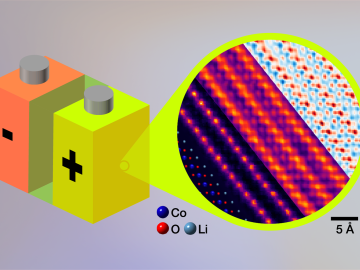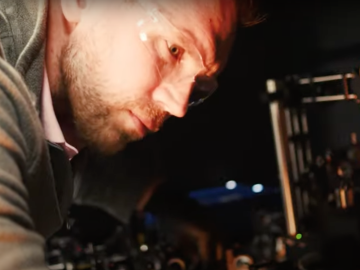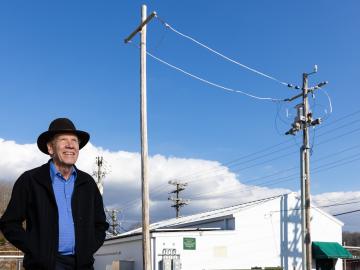
Filter News
Area of Research
- Advanced Manufacturing (1)
- Biology and Environment (16)
- Computer Science (1)
- Energy Science (12)
- Fusion and Fission (23)
- Fusion Energy (15)
- Materials (38)
- Materials for Computing (4)
- National Security (2)
- Neutron Science (4)
- Nuclear Science and Technology (12)
- Quantum information Science (2)
- Supercomputing (35)
News Topics
- (-) Exascale Computing (67)
- (-) Fusion (67)
- (-) Microscopy (56)
- (-) Molten Salt (10)
- 3-D Printing/Advanced Manufacturing (147)
- Advanced Reactors (40)
- Artificial Intelligence (131)
- Big Data (79)
- Bioenergy (112)
- Biology (128)
- Biomedical (73)
- Biotechnology (39)
- Buildings (74)
- Chemical Sciences (86)
- Clean Water (33)
- Composites (35)
- Computer Science (226)
- Coronavirus (48)
- Critical Materials (29)
- Cybersecurity (35)
- Education (5)
- Element Discovery (1)
- Emergency (4)
- Energy Storage (114)
- Environment (218)
- Fossil Energy (8)
- Frontier (64)
- Grid (74)
- High-Performance Computing (130)
- Hydropower (12)
- Irradiation (3)
- Isotopes (62)
- ITER (9)
- Machine Learning (68)
- Materials (157)
- Materials Science (158)
- Mathematics (12)
- Mercury (12)
- Microelectronics (4)
- Nanotechnology (64)
- National Security (86)
- Neutron Science (171)
- Nuclear Energy (122)
- Partnerships (68)
- Physics (69)
- Polymers (35)
- Quantum Computing (53)
- Quantum Science (93)
- Security (31)
- Simulation (65)
- Software (1)
- Space Exploration (26)
- Statistics (4)
- Summit (71)
- Transportation (103)
Media Contacts

Researchers at ORNL are teaching microscopes to drive discoveries with an intuitive algorithm, developed at the lab’s Center for Nanophase Materials Sciences, that could guide breakthroughs in new materials for energy technologies, sensing and computing.

Oak Ridge National Laboratory researchers demonstrated an electron microscopy technique for imaging lithium in energy storage materials, such as lithium ion batteries, at the atomic scale.

A force within the supercomputing community, Jack Dongarra developed software packages that became standard in the industry, allowing high-performance computers to become increasingly more powerful in recent decades.

Surrounded by the mountains of landlocked Tennessee, Oak Ridge National Laboratory’s Teri O’Meara is focused on understanding the future of the vitally important ecosystems lining the nation’s coasts.

A new fusion record was announced February 9 in the United Kingdom: At the Joint European Torus, or JET, the team documented the generation of 59 megajoules of sustained fusion energy, more than doubling the

ORNL, TVA and TNECD were recognized by the Federal Laboratory Consortium for their impactful partnership that resulted in a record $2.3 billion investment by Ultium Cells, a General Motors and LG Energy Solution joint venture, to build a battery cell manufacturing plant in Spring Hill, Tennessee.

ORNL manages the Innovation Network for Fusion Energy Program, or INFUSE, with Princeton Plasma Physics Laboratory, to help the private sector find solutions to technical challenges that need to be resolved to make practical fusion energy a reality.

Bruce Warmack has been fascinated by science since his mother finally let him have a chemistry set at the age of nine. He’d been pestering her for one since he was six.

Drilling with the beam of an electron microscope, scientists at ORNL precisely machined tiny electrically conductive cubes that can interact with light and organized them in patterned structures that confine and relay light’s electromagnetic signal.

A new version of the Energy Exascale Earth System Model, or E3SM, is two times faster than an earlier version released in 2018.


